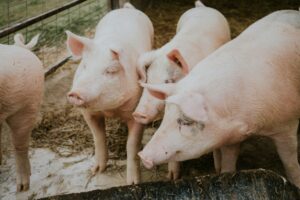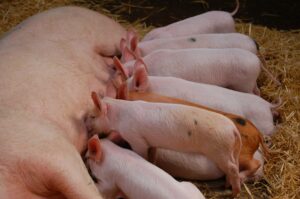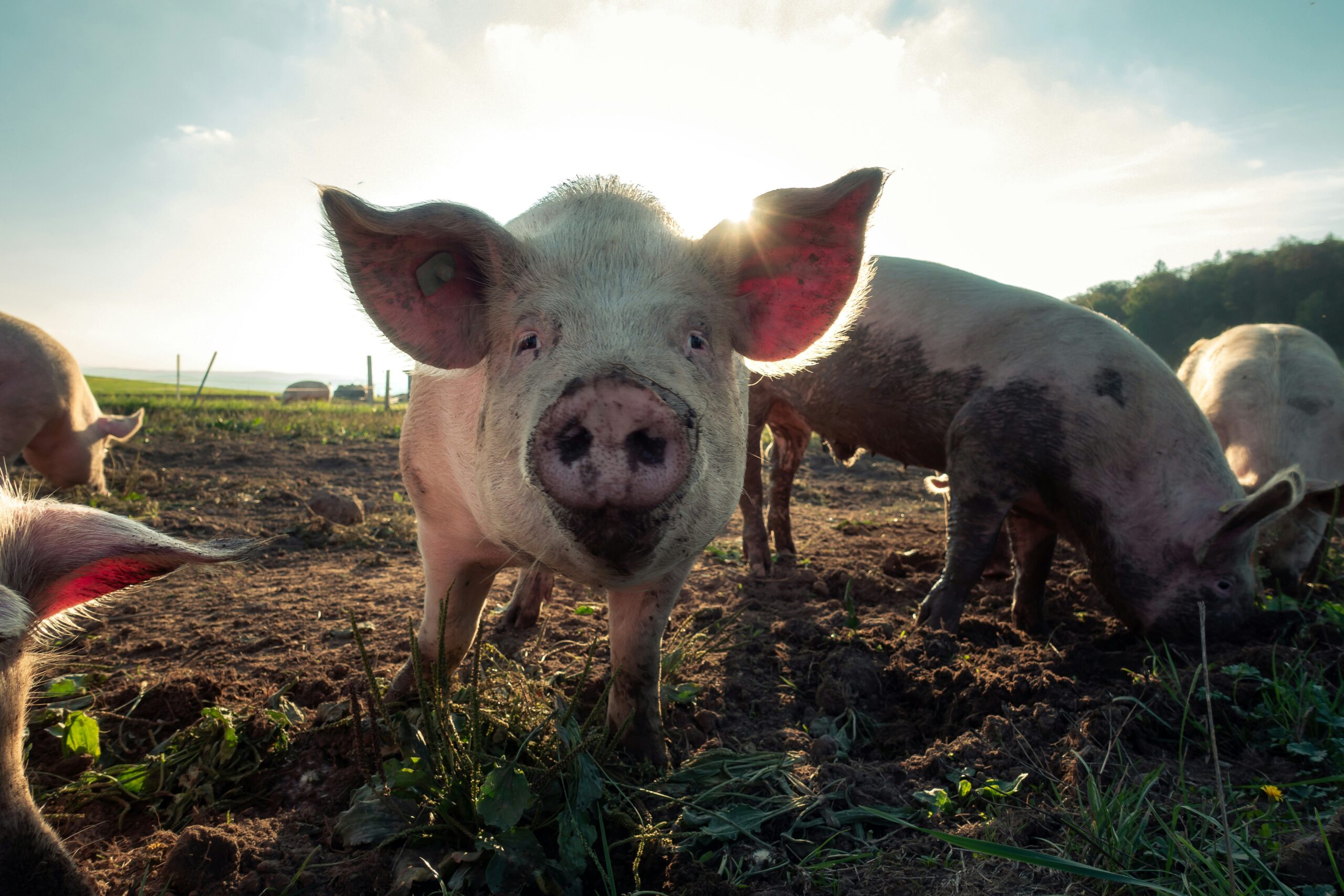Pork production can be financially rewarding – provided the farmer, big or small, understands the do’s and don’ts of the industry. Financial management is of essence. The pig production cycle refers to the various physiological stages in a pig’s life.
Pig Breeding
Generally, servicing (mating or artificial insemination (AI)) is planned to occur a week after weaning, when the sow comes into oestrus. It is standard practice for pig farms that use only natural mating to have a boar to sow ratio of between 1:15 and 1:20, However, AI allows a producer to reduce the number of boars on the farm to a boar to sow ratio of 1:50, because the semen is obtained from off-site stud breeder farms.

Additionally, AI provides the farmer with access to the best genetic lines in the world, and thus allows the achievement of optimal production performance. After weaning, the sow is placed in a pen adjacent to the boar’s pen. The sight and scent of the boar in the adjoining pen encourages the sow to come into heat. This usually occurs 5 to 7 days after weaning. When the sow is in standing heat, she is either artificially inseminated or placed in the same pen as the boar for natural mating. Boars are housed individually to prevent aggression toward each other.
Gestation
The average gestation (pregnancy) period lasts for an average of 115 days. The gestation duration is highly dependent on the season, the breed and the litter size. Pregnant sows are housed individually or in groups.
Farrowing
The sow is transferred to a farrowing pen a week before farrowing to facilitate acclimatisation. Careful supervision is required for at least the first week after farrowing to ensure an optimal piglet survival rate. A farrowing crate helps to prevent piglet mortalities by sow crushing. The piglet is vaccinated and an iron injection is administered within the first week after birth.
A creep area allows the piglets to congregate for warmth (body heat, bedding and heating). Heating lamps and/or floor heating are usually utilised to facilitate temperature control for the creep area and weaner pen. This allows the piglets to use their energy to grow rather than using the energy to heat their bodies. It also prevents piglets from trying to gain heat by lying close to the sow and therefore be at risk of being accidentally crushed by the sow.
Heating is required for the first 45 days after birth (depending on ambient temperatures). The creep area is inaccessible to the sow to prevent crushing of piglets and access to creep feed.
The piglet is fed exclusively by the sow’s milk for the first 14 days after farrowing. After 14 days, small amounts of creep feed are provided to the piglets along with suckling which allow the piglet to grow accustomed to dry feed before weaning.
Weaning

Piglets are weaned (removed from the sow) at the age of 21 to 28 days at an average live weight of between 7.5 and 9 kg. However, it is possible to reduce the weaning age to a minimum of 19 days. A lower weaning age (weaning at an age of 21 days as opposed to 28 days) allows the sow to have more litters per year and it reduces the potential of disease transfer from the sow to the piglets.
The lower weaning age requires high levels of nutrition, housing, supervision and expert knowledge. A weaning age of less than 28 days is not recommended for non-intensive pig farms (primarily smallholder farmers) because of the increased management and housing requirements.
The sow is transferred to the breeding facilities and the weaned pigs are either housed in the nursery facilities or transferred to weaner housing. Heating is provided to the weaners.
Growing and finishing
The weaners are transferred to the grower housing at an age of between 58 days (live weight of approximately 20 kg) and 70 days (live weight of approximately 25 kg) as a result of increased needs in terms of feeding and space allowance and lower ambient temperature requirements. At the age of 118 days (live weight of 58 kg), the growers are transferred to the finisher housing. For F1 cross or
Purebred breeding systems, the best gilts and boars (those that show the characteristics of being healthy and potentially good breeders) are kept to replace the older or culled breeding stock. For terminal cross breeding systems, breeding stock is replaced from outside the herd and all the offspring are destined for the market.
Slaughter
The slaughter stage involves loading the pigs on the delivery truck and transporting them to the abattoir. The pigs are sold and slaughtered from the age of 118 days (58 kg live weight) to over 168 days (100 kg live weight). Culled breeding stock is sold as sausage pigs.
More on this subject will be published in due course. Source: JJ Roelofse, Stellenbosch University

